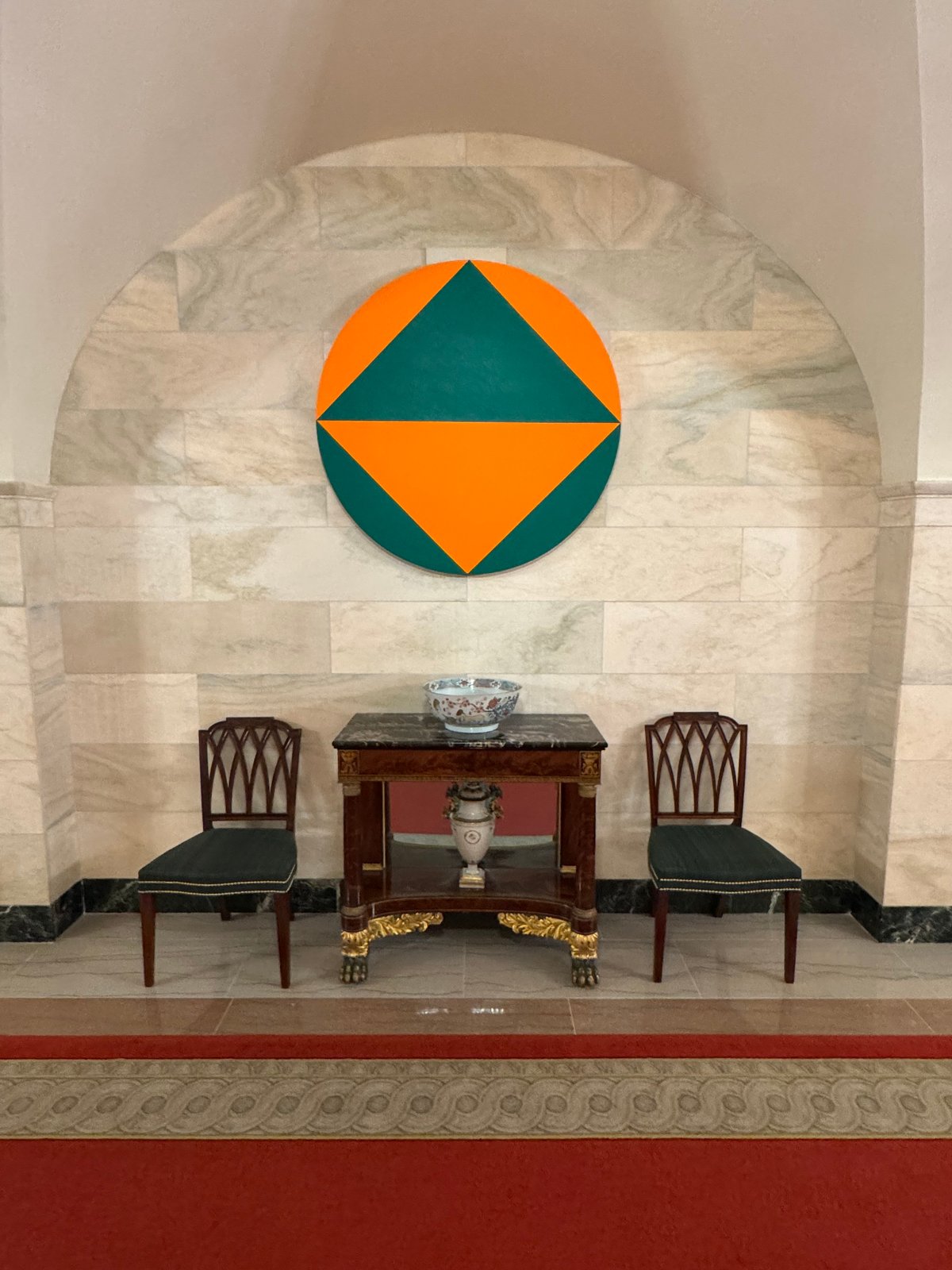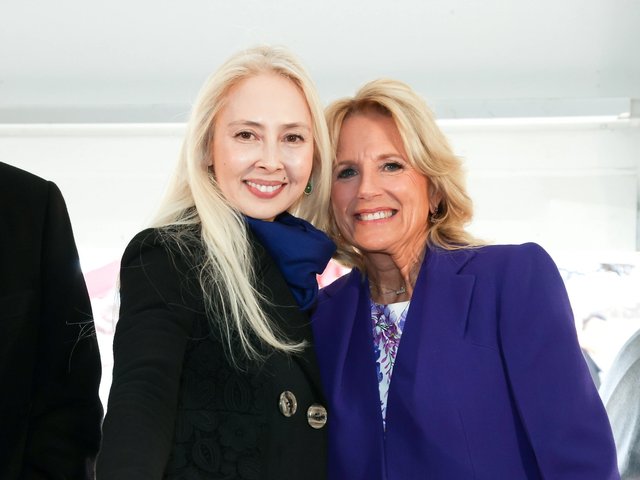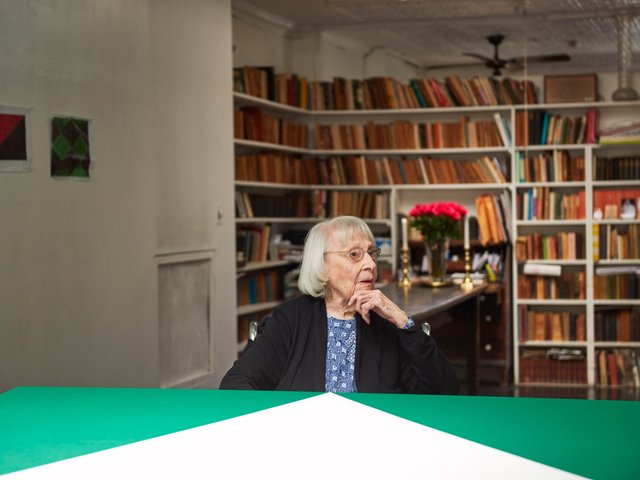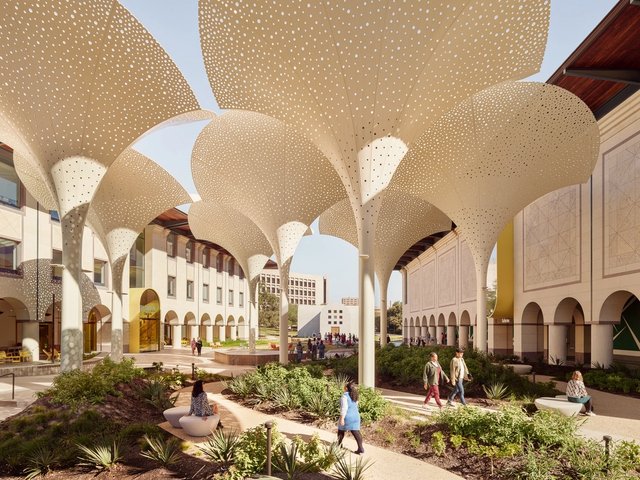Carmen Herrera, the late Cuban American painter, has joined the rarified group of artists whose work is held in the White House’s collection. Herrera is being lauded as the first woman of Latin American descent whose work is among the permanent holdings of the US presidential residence in Washington, DC.
The work in question, Dia Feriado—a teal and tangerine geometric color block painting produced in 2011—is now installed in the East Wing of the White House. According to the White House Historical Association, the East Wing has been traditionally designated for the US First Lady, and is “therefore intertwined with the story of women in political life more broadly…reflecting the wider social changes related to gender and women’s status in the mid-20th century”.
“On behalf of the Committee for the Preservation of the White House, I am grateful to the Estate of Carmen Herrera for their contribution of Herrera’s piece to the White House permanent collection,” former US first lady Jill Biden said in a statement. “Having her piece in the People’s House is an incredible recognition of the more than seven decades she spent living and working as an artist in the United States.”
Biden, alongside White House curator Donna Hayashi Smith, Tony Bechara, executive director of Herrera’s estate, and others involved in the acquisition were jointly responsible for securing the work shortly after it was featured in the artist’s exhibition at Site Santa Fe. Louis Grachos, Site Santa Fe’s director, added in a statement: “We are thrilled to see such a historically significant artist acknowledged for her contributions to contemporary art.”
The White House is home to over 500 paintings, including one set of presidential portraits—though the more famous portraits of US presidents and their spouses reside in the National Portrait Gallery. According to the White House Historical Association, the collection’s goals were significantly refined and expanded during former president John F. Kennedy’s administration, and has since aimed to select works for their “historical and cultural significance”. According to a recent report citing a now-broken government website link, the White House’s collection-at-large includes around 65,000 individual objects, from art pieces to decorative items such as utensils and other objects.
Herrera’s painting joins a select group of paintings contributed by American luminaries. In 2015, the Obama administration acquired the late Washington Colour School painter Alma Thomas’s Resurrection (1966). According to a statement published by the White House Historical Association, the acquisition made Thomas as the “first African-American woman to have her work added” to the collection. In 1995, then-president and first lady Bill and Hillary Clinton acquired Sand Dunes at Sunset, Atlantic City (1885), a landscape painting by Henry Ossawa Tanner, the first work “created by an African American” to be included in the collection.
Herrera died in 2022 at the age of 106 and is widely remembered for her illustrious career as a prolific and influential Minimalist artist known for her hard-edged abstractions. Herrera’s most expensive work at auction, Blanco y Verde (White & Green) (1966-67), fetched $2.9m in 2019 at a Sotheby’s charity auction in New York. Her work has been the subject of a number of exhibitions in the past year, including Paintings on Paper at Lisson Gallery in New York, which has represented the artist (and now the artist’s estate) since 2010.
Kaeli Deane, the senior director of the Lisson Gallery and vice president of the Carmen Herrera Foundation, tells The Art Newspaper that “it’s an honour for Carmen’s work to have been acquired by the White House Collection”, adding that “Carmen would have been touched to be a part of our national legacy”.
News of Herrera’s work being acquired by and going on view at the White House as the current presidential administration walks back federal initiatives on diversity, equity and inclusion, among a range of other seismic changes. Last week, the Smithsonian Institution and the National Gallery of Art shuttered their diversity offices following executive orders signed by president Donald Trump. Notably, the confirmation of Trump’s Secretary of State Marco Rubio, who is also of Cuban descent, made him the highest ranking Hispanic American official in US history.





